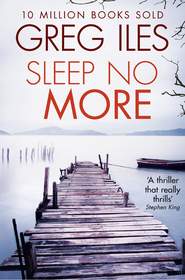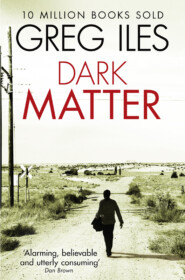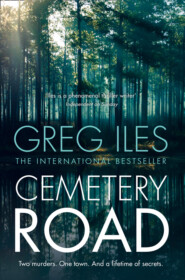По всем вопросам обращайтесь на: info@litportal.ru
(©) 2003-2024.
✖
Blood Memory
Автор
Год написания книги
2018
Настройки чтения
Размер шрифта
Высота строк
Поля
As I decelerate down the interstate ramp to the surface streets at St. Charles Avenue, my cell phone rings out the opening notes to U2’s “Sunday, Bloody Sunday.” I know without looking that it’s Sean.
“Where are you?” he asks.
I’m still fifteen blocks from the stately Victorian houses of Prytania Street, but I need to calm Sean down. “A few blocks from the scene.”
“Good. Can you handle your gear okay?”
My dental case weighs thirty-one pounds fully loaded, and tonight I’ll also need my camera case and tripod. Maybe Sean is hinting that I should ask him outside to help me. This would give him an excuse for a private talk before we find ourselves together in front of others. But a private talk is the last thing I want tonight.
“I’ve got it,” I tell him. “You sound strange. What’s going on down there?”
“Everybody’s uptight. You know the history.”
I do. There have been three serial murder cases in the New Orleans–Baton Rouge area in as many years, and serious investigative mistakes were made in all of them.
“We got some Sixth District detectives down here,” Sean goes on, “but the task force has taken over the scene. We’ll be running our investigation out of headquarters, just like the others. Captain Piazza’s already busting my balls.”
Carmen Piazza is a tough, fiftysomething Italian-American woman who came up through the ranks of the detective bureau and is now the Homicide Division commander. If anyone ever fires Sean for his involvement with me, it will be Piazza. She likes Sean’s record of arrests, but she thinks he’s a cowboy. And she’s right. He’s a tough, devilish Irish cowboy. “Does she suspect anything about us?”
“No.”
“No rumors? Nothing?”
“Don’t think so.”
“What about Joey?” I ask, referring to Sean’s partner, Detective Joey Guercio. “Has he blabbed to anybody?”
A millisecond’s hesitation. “No way. Look, just be cool like you always are. Except for last time. You feeling okay about that? Your nerves or whatever?”
I close my eyes. “I was until you asked.”
“Sorry. Just hurry down here. I’m going back in.”
A rush of anxiety blindsides me. “You can’t wait for me?”
“Probably better if I don’t.”
Better for you … “Fine.”
Focus on the case, I tell myself, checking the house numbers on Prytania to be sure where I am. They expect you to know your business.
The facts are simple enough. In the past thirty days, three men have been shot by the same gun, bitten by the same set of teeth, and—in two cases—marked by the saliva of a man whose DNA shows him 87 percent likely to be a Caucasian male. The NOPD crime lab did the ballistics that matched the bullets. The state police crime lab did the mitochondrial DNA match. And I matched the bite marks.
This is much more difficult than it appears to be on television. To explain my job to homicide detectives, I often tell them about the forensic researcher who used an articulated set of teeth to try to create perfectly matched bite marks on a corpse. He couldn’t do it. The lesson is clear, even to street cops. If matching two bite marks known to have come from the same set of teeth can be difficult, then matching marks that might have been made by any teeth among millions is next to impossible. Even comparing bite marks on a corpse with the teeth of a small group of suspects is more problematic than many odontologists pretend.
Saliva left in a bite mark by a killer can simplify things enormously, by providing DNA to compare against that of suspects. But four weeks ago, when the first victim was discovered, I recovered no saliva from the two bite marks on the body. I figured the killer for an organized offender who washed the saliva out of his bites to prevent recovery of DNA evidence. But a week later, when the second victim was found, my theory was blown out of the water. I recovered saliva from two of four bite marks left on the corpse. This raised the possibility of a different—and disorganized—killer. But by using reflective ultraviolet photography and scanning electron microscopy on the bite marks, I concluded that the same killer had indeed murdered both victims. Ballistic analysis of the recovered bullets supported my conclusion, and six days later, when the third victim was murdered, my opinion was confirmed beyond doubt by DNA recovered from the bite marks left on that body. The same killer had murdered all three men.
The importance of this cannot be overestimated. The baseline criteria for classifying a serial murderer are three victims killed by one person, each victim killed in a different location, and a cooling-off period between the crimes. I had helped prove what I’d known from the moment I saw the first victim. New Orleans had another predator on the hunt.
My official responsibility ended with matching the bite marks, but I wasn’t about to stop there. As the New Orleans Police Department joined the FBI in the uneasy marriage of a task force, I began to analyze other aspects of the case. In sexual homicide, the murderer’s selection criteria for his victims hold the key to every case. And like all serial murders, the NOMURS killings—so dubbed by the FBI for “New Orleans murders”—are at root sexual homicides. Something always links the victims in these cases, even if it’s nothing more individual than geographic location, and that link draws the predator. But the NOMURS victims have ranged widely in age, physical type, occupation, social status, and place of residence. The only similarities are that they’re white, male, over forty, and have families. These four facts combined exclude them from the known target profiles for serial killers. Moreover, none of the victims is known to have had habits that might draw a predator to an atypical target. No victim was gay or had a known sexual paraphilia. None was ever arrested for a sexual crime, reported for child abuse, or known to frequent strip clubs or other sleazy establishments. For this reason the NOMURS task force has made no progress at all in finding a suspect.
As I slow the Audi to read a house number, my skin itches with fear and anticipation. The killer was on this street only hours ago. He may be here now, watching the progress of the investigation, as serial murderers often do. Watching me. And herein lies the thrill. A predator is not prey. When you hunt a predator, you place yourself in a position to be hunted yourself. There’s no other way. If you follow a lion into a thicket, you step within reach of his claws. And my adversary is no lion. He’s the deadliest creature in the world: a human male driven by anger and lust, yet governed—at least temporarily—by logic. He stalks these streets with impunity, confident in his prowess, meticulous in his planning, arrogant in his execution. The only thing I know about him is this: like all his brothers before him, he will kill again, and again, until someone unravels the riddle of his psyche or he self-destructs from the intensity of conflict in his own mind. A lot of people don’t care which way it ends, so long as it ends soon.
I do.
Sean is standing on the sidewalk, waiting. He’s walked a block up from the victim’s house to meet me. He always did have guts. But does he have enough to face our present situation?
I park behind a Toyota Land Cruiser, get out, and start to unload my cases. Sean gives me a quick hug, then unloads the cases himself. He’s forty-six years old but looks forty, with the easy, confident grace of a natural athlete. His hair is mostly black, his eyes green with a bit of a twinkle. Even after being his lover for eighteen months, I half expect a lilting Irish brogue to emerge when Sean opens his mouth. But it’s the familiar New Orleans accent instead, the Brooklynesque drawl with a hint of crawfish.
“You doin’ okay?” he asks.
“Changed your mind?”
He shrugs. “I felt bad.”
“Bullshit. You wanted to see for yourself if I was sober.”
I see the truth of it in his face. He gives me a penetrating survey with his eyes and makes no apology for it.
“Go on,” I tell him.
“What?”
“You were about to say something. Go ahead.”
He sighs. “You look rough, Cat.”
“Thanks for the vote of confidence.”
“Sorry. Are you drunk?”
Anger tightens my jaw muscles. “I’m stone sober for the first time in more years than I can count.”
I see skepticism in his face. Then, as he studies me, belief comes into his eyes. “Jesus. Maybe a drink is what you need.”
“Worse than you know. But I’m not going to.”
“Why not?”
“Come on. Let’s do this.”
“I still need to go in ahead of you.” He looks embarrassed.
Exasperation makes me look away. “How long? Five minutes?”
“Not that long.”
I wave him off and get back into my car. He steps toward my door, then changes his mind and walks down the block.











